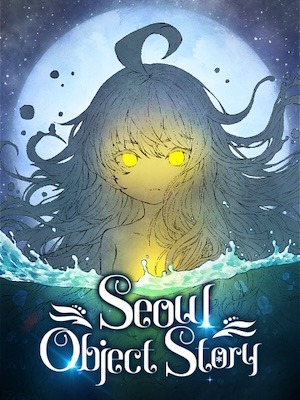Introduction
South Korea’s capital, Seoul, is a vibrant city where history meets modernity, and tradition blends with innovation. This bustling metropolis is not just known for its towering skyscrapers and bustling streets but also for the stories embedded in its many objects, both ancient and modern. The concept of a Seoul object story invites us to explore the narratives behind these objects, uncovering the cultural, historical, and social meanings they hold. This article delves deep into the Seoul object story, unraveling the tales behind various artifacts, architecture, and everyday items that define the city’s unique character.
The Essence of a Seoul Object Story
What is a Seoul Object Story?
A Seoul object story is a narrative that revolves around a particular object found in Seoul, through which we can understand the broader cultural and historical context of the city. These stories might involve traditional objects like hanbok (Korean traditional clothing), ancient palaces like Gyeongbokgung, or even modern structures such as the Dongdaemun Design Plaza. The essence of a Seoul object story lies in its ability to connect the past and present, offering insights into how the city’s heritage has evolved over time.
The Importance of Objects in Cultural Narratives
Objects serve as tangible links to the past. In Seoul, they are not merely items of utility or aesthetic value but symbols of the city’s identity. Each Seoul object story tells us something about the people who made, used, or preserved these objects. They reflect societal values, technological advancements, and the everyday lives of Seoul’s inhabitants throughout history.
Seoul’s Historical Artifacts: Unveiling the Past
The Tale of Gyeongbokgung Palace
Gyeongbokgung Palace is one of Seoul’s most iconic landmarks, and it plays a central role in any Seoul object story that aims to explore the city’s royal heritage. Built in 1395, during the Joseon Dynasty, the palace has witnessed countless historical events, including invasions, renovations, and restorations. The intricate design of the palace, with its grand halls and serene gardens, speaks volumes about the architectural prowess of the time.
The Seoul object story of Gyeongbokgung is not just about its physical structure but also about the cultural practices and royal ceremonies that took place within its walls. The palace was the heart of the Joseon Dynasty, and today, it remains a symbol of Korea’s resilience and rich history.
Hanbok: The Traditional Attire
Another significant Seoul object story is that of the hanbok, the traditional Korean attire. Hanbok is more than just clothing; it represents the aesthetics, values, and social hierarchies of the time. The colors, patterns, and styles of hanbok vary depending on the wearer’s status, age, and occasion. For instance, during the Joseon Dynasty, different colors were used to denote rank within the royal family and court officials.
Today, hanbok is still worn during special occasions such as weddings, holidays, and traditional ceremonies, making it a living part of the Seoul object story. Modern designers have also reinterpreted hanbok, blending traditional elements with contemporary fashion, thereby keeping the Seoul object story alive in the 21st century.
Modern Objects, Modern Stories
The Seoul Tower: A Modern Icon
In the context of a Seoul object story, the Seoul Tower, also known as Namsan Seoul Tower, stands as a modern-day icon. Originally built as a broadcasting tower in 1969, it has since become a popular tourist destination, offering panoramic views of the city. The Seoul object story of the tower includes its transformation from a functional structure into a symbol of Seoul’s modernity and romance.
Visitors to the Seoul Tower often leave “love locks” on the fences surrounding the tower, creating their own personal Seoul object story. These locks, symbolizing eternal love, add a layer of contemporary cultural narrative to the tower, blending personal stories with the city’s larger narrative.
Dongdaemun Design Plaza: A Symbol of Innovation
The Dongdaemun Design Plaza (DDP) is another key element in any modern Seoul object story. Designed by the renowned architect Zaha Hadid, the DDP is a futuristic building that contrasts sharply with the traditional architecture found elsewhere in the city. Its flowing lines and organic shapes are emblematic of innovation and creativity, making it a symbol of Seoul’s dynamic and forward-thinking spirit.
The Seoul object story of the DDP also involves its role as a hub for design, fashion, and cultural events. It hosts Seoul Fashion Week, among other significant events, thereby playing a crucial part in shaping the contemporary cultural landscape of the city.
Everyday Objects with Extraordinary Stories
The Humble Kimchi Jar
One cannot discuss a Seoul object story without mentioning the kimchi jar. These large earthenware vessels, known as “onggi,” have been used for centuries to ferment and store kimchi, a staple in Korean cuisine. The process of making kimchi and storing it in onggi is deeply rooted in Korean culture and tradition, representing the ingenuity and resourcefulness of the Korean people.
The Seoul object story of the kimchi jar is a tale of sustenance, community, and cultural preservation. In the past, families would gather to prepare large batches of kimchi before winter, a practice known as “kimjang,” which has been recognized by UNESCO as an Intangible Cultural Heritage of Humanity.
The Seoul Metro Card: A Ticket to the City’s Heartbeat
A more contemporary Seoul object story can be found in the form of the Seoul Metro card. This small, seemingly insignificant object is a gateway to the city’s vast and efficient public transportation system. The Metro card represents the lifeblood of the city, connecting millions of people to their destinations every day.
The Seoul object story of the Metro card also reflects the city’s commitment to technological innovation and convenience. With the introduction of smartphone-based payment systems and the integration of transportation networks, the Metro card continues to evolve, embodying the dynamic nature of Seoul itself.
Cultural Significance of Seoul’s Objects
Objects as Symbols of National Identity
Each Seoul object story contributes to the collective identity of the city and, by extension, the nation. Whether it’s the grandeur of a royal palace or the simplicity of a kimchi jar, these objects encapsulate the values, beliefs, and experiences of the people of Seoul. They serve as reminders of the past while also pointing toward the future.
Preservation of Seoul’s Cultural Heritage
The preservation of objects and their stories is crucial in maintaining Seoul’s cultural heritage. Many organizations and institutions in Seoul are dedicated to this task, ensuring that future generations can continue to learn from and appreciate these stories. Museums, historical sites, and cultural festivals all play a role in keeping the Seoul object story alive.
The Evolving Narrative of Seoul’s Objects
Modern Interpretations of Traditional Objects
As Seoul continues to modernize, the Seoul object story evolves with it. Traditional objects like hanbok and kimchi jars are being reinterpreted in contemporary contexts. Designers are creating modern versions of hanbok that appeal to younger generations, while chefs are experimenting with new types of kimchi that incorporate global flavors.
These modern interpretations do not erase the original Seoul object story but rather add new chapters to it. They demonstrate how Seoul’s cultural heritage is not static but a living, breathing entity that adapts to changing times.
The Role of Technology in Shaping Seoul Object Stories
Technology plays a significant role in shaping the Seoul object story in the 21st century. From the digitalization of museum exhibits to the use of augmented reality in exploring historical sites, technology is making these stories more accessible and engaging for a global audience. The use of social media also allows for the creation of new Seoul object stories, as people from around the world share their experiences and perspectives on the city’s objects.
Conclusion
The Seoul object story is a rich tapestry of narratives that encompass the city’s past, present, and future. From ancient palaces to modern skyscrapers, from traditional clothing to everyday items, each object tells a unique story that contributes to the cultural fabric of Seoul. By exploring these stories, we gain a deeper understanding of the city’s identity and the values that have shaped it over centuries.
As Seoul continues to grow and evolve, so too will the Seoul object story. New objects will emerge, and new stories will be told, but the connection to the past will always remain. These stories are not just about the objects themselves but about the people who interact with them, the traditions they uphold, and the future they inspire.
In understanding the Seoul object story, we come to appreciate not just the physical objects that populate the city but also the intangible heritage that they represent. This ongoing dialogue between the past and the present is what makes Seoul a truly unique and fascinating city.





